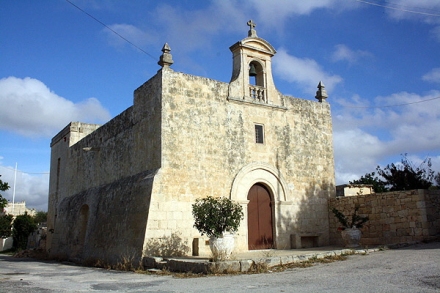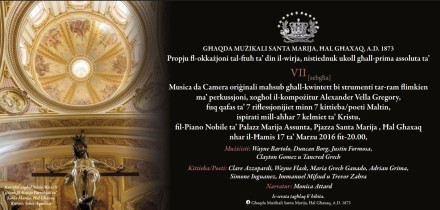And as 2019 draws to a close I would like to share with you twelve discoveries that I urge you to check out in 2020. (Ok some of them are not recent discoveries at all, but which I’ve revisited and re-appreciated this year). I have suggested one every month, but feel free to enjoy them whenever you want and as many times you want! And hope you make more discoveries along the way!
I also urge you, wherever possible, to walk or cycle or at least use shared/public transport. You will be helping the environment, benefitting your own health, as well as enjoying life more!
January: Palazzo Falson – Mdina
Mdina is a popular walking spot with tourists and locals. The former usually visit the main sites, and the latter mostly to savour the celebrated cakes at Fontanella. But Mdina has much more to offer – a lot of which is unfortunately still inaccessible to the public.
Luckily for us, Palazzo Falson is not one of those things. This house museum is a life-size cabinet of curiosities, with collections to pique everyone’s interests. There are collections of porcelain, glass, fine art, arms, rugs, and much more. There is also a dream library that I could spend hours in. You can find out more about the museum here.
Oh and the staff have a knack for making you feel at home – a welcome feel in the cold days of January!
February: Wignacourt Museum – Rabat
February can be even colder and wetter than January, so what better way to spend the day than by enjoying another gem of a museum? The Wignacourt Museum is located next to the better known St Paul’s Grotto. The area was just outside the Roman city of Melite in an area that was mostly a necropolis (see November below). Besides an impressive art collection the museum boasts its own Roman catacombs and World War II shelters. The collection is larger than you might expect, and it is worth dedicating at least two hours to enjoy it properly. You can find out more info here.
March: Church of the Annunciation Ħal Millieri l/o Żurrieq
Life in pre-modern Malta was mostly centred around Mdina, the Castello in Gozo, and the castrum maris in Birgu (aka Fort St Angelo). The rest of the inhabitants lived in small hamlets built around a cluster of churches. By the 17th century most hamlets had either become villages or else disappeared completely. Ħal Millieri is one such hamlet. Originally it boasted four churches, of which only two survive – the church of St John the Evangelist, and that of the Annunciation.
The latter is one of those unjustly neglected monuments that deserves far greater attention. The tiny church is enclosed in a small walled garden and also has the ruins of another church adjacent to it – that of the Visitation. But it is the interior which gives it its claim to fame. The walls are decorated with a series of very rare late Medieval frescoes showing various saints. It is the only complete example of late Medieval fresco cycle extant in Malta.
You can read more here. The church is only open on the first Sunday of every month from 09:00 till noon.
April: Heart of Gozo | Il-Ħaġar – Rabat, Gozo
This is what every parish / village museum should be. It houses a collection of mostly sacred art and objects attached to the Basilica of St George in Gozo. It is just the right size and expertly presented. What’s more it is a beautiful combination of community pride and academic research. The objects displayed are presented as both heritage objects as well as living history. The museum also embraces contemporary art and culture with regular contemporary exhibits and a wide range of events. You can find more information by clicking here.

Church of St Mary (Tal-Ħlas) l/o Ħal Qormi
May: Church of St Mary – Tal-Ħlas – l/o Ħal Qormi
Tal-Ħlas in Maltese means ‘of childbirth’ as well as ‘payment’ or in this case ‘ransom from slavery’. Both etymologies reflect past realities when childbirth was often fatal and slavery was a very distinct possibility. The present church is mostly a late 17th century remodelling, and the pilgrim loggias at the front offer repose to body and soul. You can read more (in Maltese) here.
Nowadays the church still attracts many devotees with a little festa organised in August, usually the first Sunday after the 15th of August. There is also a mass held every third Sunday of the month were newborns can be presented and blessed.
June: Prehistoric Temple Complex – Ħal Tarxien
The Ħal Tarxien complex is not as famous as the scenic Ħaġar Qim / Mnajdra temples, or the awe-inspiring Ġgantija Temples in Gozo, or even its more famous underground neighbour the Ħal Saflieni Hypogeum (see July below). And yet it has a special kind of feeling – almost domestic in its intimacy. The site has also been fantastically restored and revamped recently – so it’s a joy to visit. You can find out more info here.
A little extra treat: Adjoining the temples is the Ħal Tarxien cemetery complete with the Modernist church of All Souls. It is a fine example of Modernist architecture, and one of the first such churches in Malta. If the cemetery is open – worth a peek! This site is managed by Heritage Malta.
July: The Hypogeum Complex – Paola
Need a break for the summer’s heat? Well, this is one of those must-see places in the world. I have been three times already, and will definitely visit again. This underground burial complex dates back to about 4000 B.C. Everything about this space is magical – it is one of those few special sacred spaces in the world. And consider that it was all dug out by hand!
You can find more information here – you need to book your tickets well in advance, and I have to be honest, tickets are not exactly ‘cheap’ but worth every cent. This site is managed by Heritage Malta.

Church of St Mary Ħax-Xluq l/o Is-Siġġiewi
August: The Medieval Church of St Mary – Ħax-Xluq
Tucked away in a country lane between the villages of Siġġiewi and Qrendi is the charming late medieval church of Ħax-Xluq, dedicated to the Assumption of the Virgin. The church (and the surrounding hamlet) offer a rare glimpse of pre-modern Malta. The chapel is very well maintained and also boasts an exquisite positivo organ.
It seems that there is no regular Mass in this rural church so it’s very difficult to find this open. However, the titular feast is celebrated every August on the first Sunday after the 15th, where you will get to see not only the church but also a charming little festa with street food and band! There is some detailed info (in Maltese) here.
Note: Since this church seems to be open only in August for the festa I have listed it under August.
September: Church of Our Lady of Divine Providence – Is-Siġġiewi
This church is reasonably well known, although mostly opened for special occasions and weddings. The building itself is a fine example of Maltese Baroque architecture, with an elegant portico reminding us that this was once an important pilgrimage church. You can read more info (in Maltese) here.
A little feast is also celebrated here on the first Sunday of September. It is one of those perfect little celebrations, with just the right amount of street decoration and the right amount of fireworks, and the right amount of people!
October: Church of St Mary (aka tas-Samra) – Ħamrun
I am not including this out of patriotism…this is a true hidden gem. The church has a very interesting history which you can read here (sorry it’s in Maltese!). It is a beautiful little church and contains some beautiful works of art including a very fine Baroque altarpiece of Saint Charles Borromeo. The area also has important historical connections, with the hill being used as a gun battery during the blockade of the French garrison between 1798-1800.
The church is a pretty active one with regular masses being held, as well as a little festa of its own on the 15th of August complete with processional statue and some very dubious street decorations. However, I am listing it as an October activity because that’s when Ħamrun hosts the Chocolate Festival, and well, going up the hill to visit the church might just be the perfect excuse for that extra chocolate truffle…;)
November: St Paul’s Catacombs – Rabat
It is actually incorrect to refer to this site as ‘catacombs’ – only a part of the complex merits that title. The rest is made up of a collection of hypogea scattered around the area. That does not detract in any way from the importance and beauty of the site. The recent renovations have not only made the site easier to read, but also opened up new areas to the public. The site includes Roman, Christian, and Jewish burials. The wonderful thing about the site is that it now feels like a small archaeological park with a few benches and tables above ground level so you can enjoy the site as well as some winter sun.
November is a month of remembrance, and this is an ideal way to reflect on death and burial rituals. There are some accessibility issues with the site owing to the very nature of the space, and it is not recommended to those suffering from claustrophobia. This site is managed by Heritage Malta and you can read more here.

The Roman Apiary at Xemxija
December: Xemija Heritage Trail – St Paul’s Bay
Winter in Malta does not really start until Christmas, making countryside walks ideal in the late Autumn sun. I have to admit I have an aversion to the St Paul’s Bay area, mostly because of the way it has been mutilated and destroyed by ugly architecture. But the Xemxija Heritage Trail was one of my discoveries of 2019.
This trail contains everything – Cart ruts, Neolithic dwellings, Punic tombs, Roman apiaries and baths…you name it! There isn’t a lot of reliable info online but this blog entry is helpful. My only regret is that I went there with a large group and did not have time to explore everything properly. Definitely worth another visit! You are also faced with the ugliness of modern apartment blocks and the encroaching ‘development’ that constantly threatens our shared heritage.
________
Education can take many forms – discover your past so that our future may be brighter!





